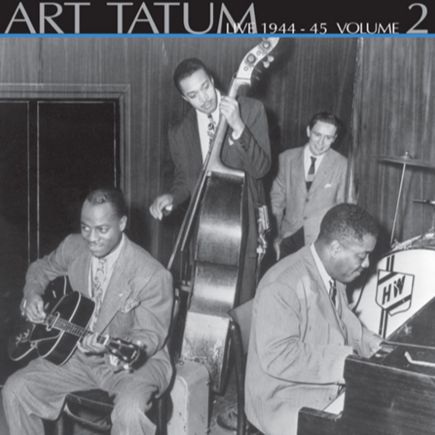Ain’t Misbehavin’: Fats Waller, Harlem et l’affirmation d’un art
Composée en 1929 par Fats Waller et Harry Brooks, sur des paroles d’Andy Razaf, Ain’t Misbehavin’ est bien plus qu’un simple succès musical: elle incarne l’esprit foisonnant de la Harlem Renaissance. Pensée comme numéro d’ouverture de la revue Connie’s Hot Chocolates, produite au Connie’s Inn — principal rival du Cotton Club —, elle célèbre l’inventivité afro-américaine dans un contexte de profonde effervescence artistique.
La chanson séduit par la combinaison d’une mélodie accrocheuse et d’harmonies sophistiquées, typiques du style stride dont Waller était l’un des maîtres incontestés. À travers un texte sur la fidélité amoureuse face aux tentations, Ain’t Misbehavin’ trouve une résonance universelle et intemporelle, renforçant son pouvoir d’attraction bien au-delà de son époque.
Son destin bascule lorsqu’un jeune Louis Armstrong est invité à doubler l’orchestre de Leroy Smith pour jouer au Hudson Theater. Son interprétation entre les actes, d’abord discrète depuis la fosse, devient rapidement le point culminant du spectacle. Un critique du New York Times souligne la puissance de ce moment, décrivant la chanson comme ‘synthétique, mais tout à fait agréable’. Armstrong est alors officiellement intégré à la distribution: sa prestation, désormais sur scène, propulse sa carrière vers une reconnaissance nationale.
La virtuosité jubilatoire de Art Tatum
Enregistrée en direct à New York, vraisemblablement à l’automne 1944, l’interprétation de Ain’t Misbehavin’ par Art Tatum offre un aperçu saisissant de son art en situation de club, où spontanéité et invention se rejoignent dans une effervescence irrésistible. Ce standard devient, sous les doigts de Tatum, un terrain de jeux harmoniques et rythmiques dont il repousse les limites avec une assurance déconcertante.
Dès l’introduction, il affirme sa signature: accords densifiés, arpèges fulgurants et contrôle absolu du rebond rythmique. Tatum conserve l’esprit ludique et chaleureux de la composition originale, mais l’enrichit de variations qui réinventent presque à chaque chorus la relation entre mélodie et accompagnement. La main gauche, héritière directe du stride mais complètement transcendée, installe une pulsation solide tout en laissant la main droite explorer des lignes d’une virtuosité presque violonistique.
Ce Ain’t Misbehavin’ constitue un moment précieux dans la chronologie du pianiste: il capture un artiste à l’apogée de sa créativité, capable d’allier jubilation, sophistication et une liberté totale dans l’art de l’improvisation.
Ain’t Misbehavin’: Fats Waller, Harlem y la afirmación de un arte
Compuesta en 1929 por Fats Waller y Harry Brooks, con letra de Andy Razaf, Ain’t Misbehavin’ es mucho más que un éxito musical: encarna el espíritu vibrante del Renacimiento de Harlem. Concebida como número de apertura de la revista Connie’s Hot Chocolates, producida en el Connie’s Inn — principal competidor del Cotton Club —, celebra la inventiva afroamericana en un momento de intensa efervescencia artística.
La canción destaca por su combinación de melodía pegadiza y armonías sofisticadas, características del estilo stride que Waller dominaba con maestría. Su letra, centrada en la fidelidad amorosa frente a las tentaciones, le confiere una resonancia universal y atemporal, lo que ha contribuido a consolidar su atractivo a lo largo de las décadas.
Su destino cambia cuando un joven Louis Armstrong es invitado a reforzar la orquesta de Leroy Smith en el Hudson Theater. Su interpretación durante los intermedios, inicialmente desde el foso, se convierte pronto en el punto culminante del espectáculo. Un crítico del New York Times destacó la fuerza de ese momento, describiendo la canción como “sintética, pero francamente agradable”. Armstrong es entonces integrado oficialmente en el reparto, y su actuación sobre el escenario lanza su carrera hacia el reconocimiento nacional.
La jubilosa virtuosidad de Art Tatum
Grabada en directo en Nueva York, probablemente en el otoño de 1944, la interpretación de Ain’t Misbehavin’ por Art Tatum ofrece una visión impactante de su arte en un contexto de club, donde espontaneidad e invención convergen en una efervescencia irresistible. Este standard se convierte, bajo los dedos de Tatum, en un terreno de juego armónico y rítmico cuyos límites él expande con una seguridad desconcertante.
Desde la introducción, afirma su firma sonora: acordes densificados, arpegios fulgurantes y un control absoluto del rebote rítmico. Tatum conserva el espíritu lúdico y cálido de la composición original, pero la enriquece con variaciones que reinventan, casi en cada chorus, la relación entre melodía y acompañamiento. La mano izquierda, heredera directa del stride pero completamente trascendida, instala una pulsación sólida mientras la mano derecha explora líneas de una virtuosidad casi violinística.
Este Ain’t Misbehavin’ constituye un momento precioso en la cronología del pianista: captura a un artista en el apogeo de su creatividad, capaz de unir júbilo, sofisticación y una libertad absoluta en el arte de la improvisación.
Ain’t Misbehavin’: Fats Waller, Harlem e l’affermazione di un’arte
Composta nel 1929 da Fats Waller e Harry Brooks, con testo di Andy Razaf, Ain’t Misbehavin’ è molto più di un successo musicale: rappresenta lo spirito vivace della Harlem Renaissance. Pensata come apertura della rivista Connie’s Hot Chocolates, andata in scena al Connie’s Inn — principale concorrente del Cotton Club —, celebra l’ingegno afroamericano in un contesto di grande fermento artistico.
Il brano conquista per l’efficace combinazione tra melodia accattivante e armonie raffinate, tipiche dello stile stride che Waller padroneggiava in modo magistrale. Il testo, incentrato sulla fedeltà amorosa nonostante le tentazioni, le conferisce una forza espressiva universale e senza tempo, che ne ha garantito la longevità.
La svolta arriva quando un giovane Louis Armstrong viene invitato a rinforzare l’orchestra di Leroy Smith al Hudson Theater. La sua esecuzione tra un atto e l’altro, inizialmente dal golfo mistico, diventa presto il momento clou dello spettacolo. Un critico del New York Times sottolineò la potenza di quel passaggio, definendo la canzone “sintetica, ma assolutamente gradevole”. Armstrong viene così inserito ufficialmente nel cast, e la sua performance sul palco segna l’inizio della sua ascesa a livello nazionale.
La virtuosità gioiosa di Art Tatum
Registrata dal vivo a New York, probabilmente nell’autunno del 1944, l’interpretazione di Ain’t Misbehavin’ da parte di Art Tatum offre uno sguardo sorprendente sulla sua arte in un contesto di club, dove spontaneità e invenzione si uniscono in un’effervescenza irresistibile. Questo standard diventa, sotto le sue dita, un terreno di gioco armonico e ritmico di cui egli spinge i limiti con una sicurezza disarmante.
Fin dall’introduzione afferma la sua firma sonora: accordi densificati, arpeggi folgoranti e un controllo assoluto della pulsazione ritmica. Tatum conserva lo spirito giocoso e caloroso della composizione originale, ma lo arricchisce con variazioni che reinventano quasi a ogni chorus il rapporto tra melodia e accompagnamento. La mano sinistra, erede diretta dello stride ma completamente trasfigurata, stabilisce una pulsazione solida mentre la mano destra esplora linee di una virtuosità quasi violinistica.
Questo Ain’t Misbehavin’ rappresenta un momento prezioso nella cronologia del pianista: cattura un artista all’apice della sua creatività, capace di unire esuberanza, sofisticazione e una libertà totale nell’arte dell’improvvisazione.
Ain’t Misbehavin’: Fats Waller, Harlem, and the assertion of an art form
Composed in 1929 by Fats Waller and Harry Brooks, with lyrics by Andy Razaf, Ain’t Misbehavin’ is far more than a popular hit — it captures the dynamic spirit of the Harlem Renaissance. Originally conceived as the opening number for the revue Connie’s Hot Chocolates, staged at Connie’s Inn — the main rival of the Cotton Club — the piece celebrates African American creativity during a time of profound artistic vitality.
The song captivates through its blend of catchy melody and sophisticated harmonies, hallmarks of the stride piano style that Waller mastered like few others. Its lyrics, centered on romantic fidelity in the face of temptation, carry a timeless and universal resonance, lending the piece lasting relevance.
Its trajectory shifted dramatically when a young Louis Armstrong was asked to reinforce Leroy Smith’s orchestra at the Hudson Theater. His intermission performance — initially delivered from the orchestra pit — quickly became the highlight of the evening. A New York Times critic noted the impact of the moment, calling the song “synthetic but thoroughly enjoyable.” Armstrong was soon officially added to the cast, and his stage performance marked the beginning of his rise to national fame.
The exuberant virtuosity of Art Tatum
Recorded live in New York, likely in the fall of 1944, Art Tatum’s interpretation of Ain’t Misbehavin’ offers a striking glimpse of his artistry in a club setting, where spontaneity and invention merge into irresistible effervescence. Under Tatum’s hands, this standard becomes a playground of harmonic and rhythmic possibilities whose limits he pushes with astonishing assurance.
From the introduction, he asserts his signature: densified chords, blazing arpeggios, and absolute control of rhythmic bounce. Tatum preserves the playful, warm spirit of the original composition but enriches it with variations that reinvent the relationship between melody and accompaniment almost every chorus. The left hand, a direct heir to stride yet completely transcended, establishes a solid pulse while the right hand explores lines of nearly violin-like virtuosity.
This Ain’t Misbehavin’ stands as a precious moment in the pianist’s chronology: it captures an artist at the height of his creativity, capable of uniting jubilation, sophistication, and total freedom in the art of improvisation.


Ain’t Misbehavin’–19.07.1929–Louis ARMSTRONG
Ain’t Misbehavin’–02.08.1929–Fats WALLER
Ain’t Misbehavin’–13.07.1933–Duke ELLINGTON
Ain’t Misbehavin’–09.07.1935–Paul WHITEMAN & Jack TEAGARDEN
Ain’t Misbehavin’–03.03.1937–Jimmy MUNDY
Ain’t Misbehavin’–22.04.1937–Django REINHARDT
Ain’t Misbehavin’–xx.05-06.1938–Jelly Roll MORTON
Ain’t Misbehavin’–18.05.1950–Sarah VAUGHAN
Ain’t Misbehavin’–xx.10.1955–Johnny HARTMAN
